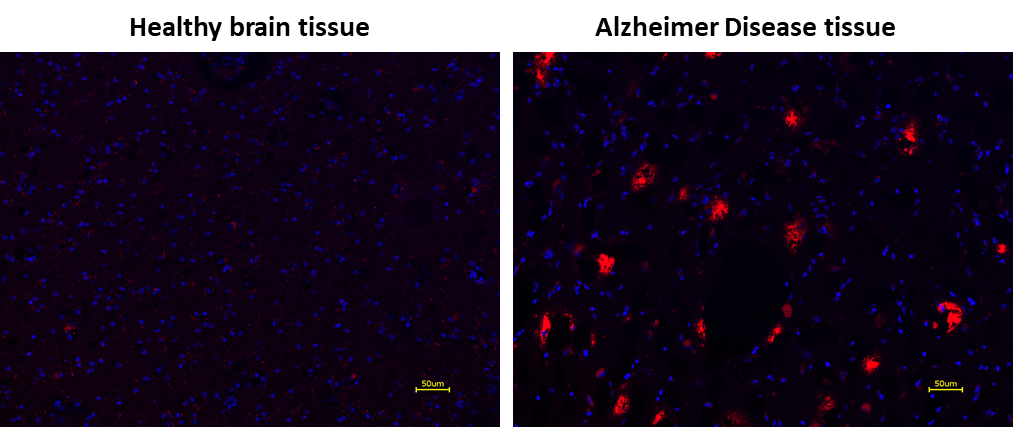The accumulation of insoluble amyloid plaques in the nerve tissue is widely considered to contribute to the development of neurodegenerative human diseases, such as Alzheimer’s disease. The investigation of the beta-amyloid formation is one of the most important tasks to find an effective way to inhibit the accumulation of insoluble amyloid plaques in the nerve tissue. However, the lack of effective imaging tools severely limited this research. Staining of nerve tissues with Congo Red dye is one of the most common tools for monitoring the formation of the amyloid aggregates. Congo Red has a few limitations such as its low sensitivity, significant toxicity and carcinogenicity. AAT Bioquest developed Amylite™ Red stain to address these limitations. Amylite™ Red is designed to label amyloid plaques in paraffin-embedded or freshly cut frozen tissue sections via a simple mix and read step. Amylite™ Red staining can be completed within 30 minutes with desired specificity. The staining process does not require antibodies. It is much more efficient and cost effective than the anti-amyloid antibody-based fluorescence imaging. Amylite™ Red imaging reagent is compatible with other fluorophores, such as DAPI, Hoechst and ethidium bromide, as well as fluorescent-labelled antibodies with emission spectra in the blue or green emission range, such as GFP.


| Catalog | Size | Price | Quantity |
|---|---|---|---|
| 23040 | 100 Tests | Price |
| Molecular weight | 391.23 |
| Solvent | DMSO |
| Excitation (nm) | 485 |
| Emission (nm) | 671 |
| H-phrase | H303, H313, H333 |
| Hazard symbol | XN |
| Intended use | Research Use Only (RUO) |
| R-phrase | R20, R21, R22 |
| Storage | Freeze (< -15 °C); Minimize light exposure |
| Fluorescence microscope | |
| Excitation | 510 nm |
| Emission | 660 nm |
| Recommended plate | Black wall/clear bottom |
| Telephone | |
| Fax | |
| sales@aatbio.com | |
| International | See distributors |
| Bulk request | Inquire |
| Custom size | Inquire |
| Technical Support | Contact us |
| Request quotation | Request |
| Purchase order | Send to sales@aatbio.com |
| Shipping | Standard overnight for United States, inquire for international |

